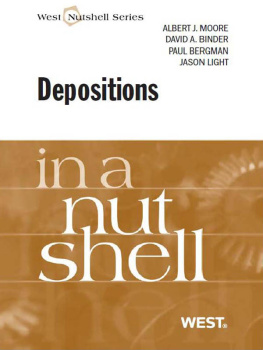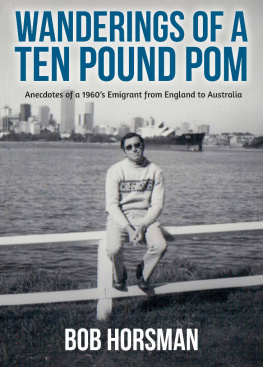FOREWORD.
To most Americans, "going abroad" means visiting Europe. Since European travel will doubtless be unsatisfactory for some years to come, the globetrotter may well turn his attention to the Far East which, while not so accessible, is after all easily reached if the cost be not prohibitive; and the ubiquitous Cook is nearly always on hand to help the traveler out of difficulties.
The trip across the Pacific is of course a long one, but the journey is interrupted, before the end of the first week, by a stop at that tropical paradise, the Hawaiian Islands.
If one should need a complete rest, this seven thousand mile voyage is just the thing. If he desire he may read or study to good advantage. If inclined to sea-sickness there is plenty of time to recover and still enjoy the greater part of the journey. While the distances between stopping places are often great one feels that he can "do" a place in much less time than it would take in Europe, where objects of historic and other interest are so crowded together. If interested in the work of foreign missions abundant opportunity offers for their study at first hand.
It was chiefly during these journeys between stopping places that the following sketches were written, as a sort of diary or log, illustrated by photographs taken by the writer.
On a beautiful morning in May the U. S. Army Transport "Sherman," after a voyage of twenty-eight days from San Francisco, tied up at the dock in Manila. The regular lines make the trip in much less time than the leisurely transports, but the writer, as a representative of the Smithsonian Institution, was furnished passage on the government vessel. With Manila as headquarters, collecting trips were made to various regions roundabout. Some of these places are described in the following chapters.
Finally, upon one of the inter-island transports, a trip to the southernmost islands of the Philippine group was made, ending at Zamboanga, where the North German Lloyd steamer was taken for Singapore, via Borneo. From Singapore a four days' trip, without stop, brought us to Hongkong; whence, after seeing that place and the nearby city of Canton, a two days' trip brought us again to Manila. It is the various places visited in this more or less out-of-the-way circuit that are described in the remaining chapters.
A. M. R.
MORGANTOWN, W. VA.
I. LIFE IN A PHILIPPINE VILLAGE.
The little village or barrio of Mariveles is situated just inside the narrow cape that forms the northern border of the entrance to Manila Bay. The city of Manila lies out of sight, thirty miles to the southeast, but the island of Corregidor lies only seven miles to the south, and the great searchlights at night are quite dazzling when turned directly upon the village. A large amount of money has recently been spent in fortifying Corregidor until it is now considered practically impregnable.
The village extends for about half a mile close along the beach and is flanked, on the west, by the buildings of a United States quarantine station.
Arriving by a very dilapidated launch from Manila I waited at the government dock while the native boy I had brought with me went to the village to find, if possible, a vacant house. He soon returned, with another boy to help carry our baggage, (there was not a cart or wagon of any sort in the place) and with the information that he had engaged a house for our use. A whole house for two people sounded rather formidable but as this house contained only two rooms its rental was not as extravagant as might have been imagined. It was located on the main thoroughfare which had the very American name of Washington Street. Like the typical native house, our Washington Street mansion was built chiefly of bamboo and nipa palm, with a few heavier timbers in the framework. Upon the main timbers of the frame was built a sort of lattice of split bamboo, upon which in turn was sewed, shinglewise, close layers of nipa palm that are quite impervious to rain, are fairly durable, and are very inflammable. The people's floor was elevated four or five feet above the ground, thereby securing not only air and dryness for the people above, but also providing a very convenient chicken-coop and pig-pen beneath. The floor was made of split bamboo which made sweeping easymerely a matter of pushing the dirt through the cracks between the strips of bamboo.
MARIVELES VILLAGE AND MOUNTAIN, FROM MANILA BAY.
MARIVELES VILLAGE AND MOUNTAIN, FROM MANILA BAY.
Although the smell of even a clean pig under the dining-room table is rather objectionable at first, as is the crowing of two or three roosters early in the morning, it is surprising how soon one becomes accustomed to these little annoyances, and it simplifies domestic science considerably to be able to throw, from one's seat at table, banana skins and other scraps through a convenient hole in the floor and have them immediately disposed of by the pig and chickens beneath.
OUR RESIDENCE ON "WASHINGTON STREET."
OUR RESIDENCE ON "WASHINGTON STREET."
The dining room, as in many American houses, also served as a kitchen. The stove was a large box, elevated two or three feet from the floor, lined with baked clay upon which the fire is made. Large iron spikes, arranged in groups of three, may be imbedded in the clay to hold one or more pots of different sizes. There was no chimney, but a convenient window carried out the smoke quite effectively. The fire-wood was stored under the house in the pig-pen and consisted chiefly of short sticks of such diameter as could be easily cut with the large knife or bolo that the natives wear suspended from a belt at the waist. The sticks, when the cooking is done, are simply withdrawn from beneath the pot and lie ready to be pushed in again when the fire is lit for the next meal. A very few sticks will thus serve for cooking a large number of the simple native meals. Opening from the kitchen was the front door, leading to the ground by a flight of stairs or a ladder. Thanks to the United States Mariveles is supplied with abundant water, piped from some miles up in the mountains, and some of the better houses of the barrio have a private faucet on the back porch, which is luxury indeed. The main room of the house was used as a living room and bedroom. In such houses there are usually large windows, without sash of course, which are shaded by day and closed by night and in severe storms by a hinged awning of nipa, seen in the photographs. In spite of the warmth nearly all natives close the window shades tight when they sleep, so that, in spite of the numerous cracks, the ventilation must be very bad; this may partly account for the prevalence of tuberculosis on the islands.













